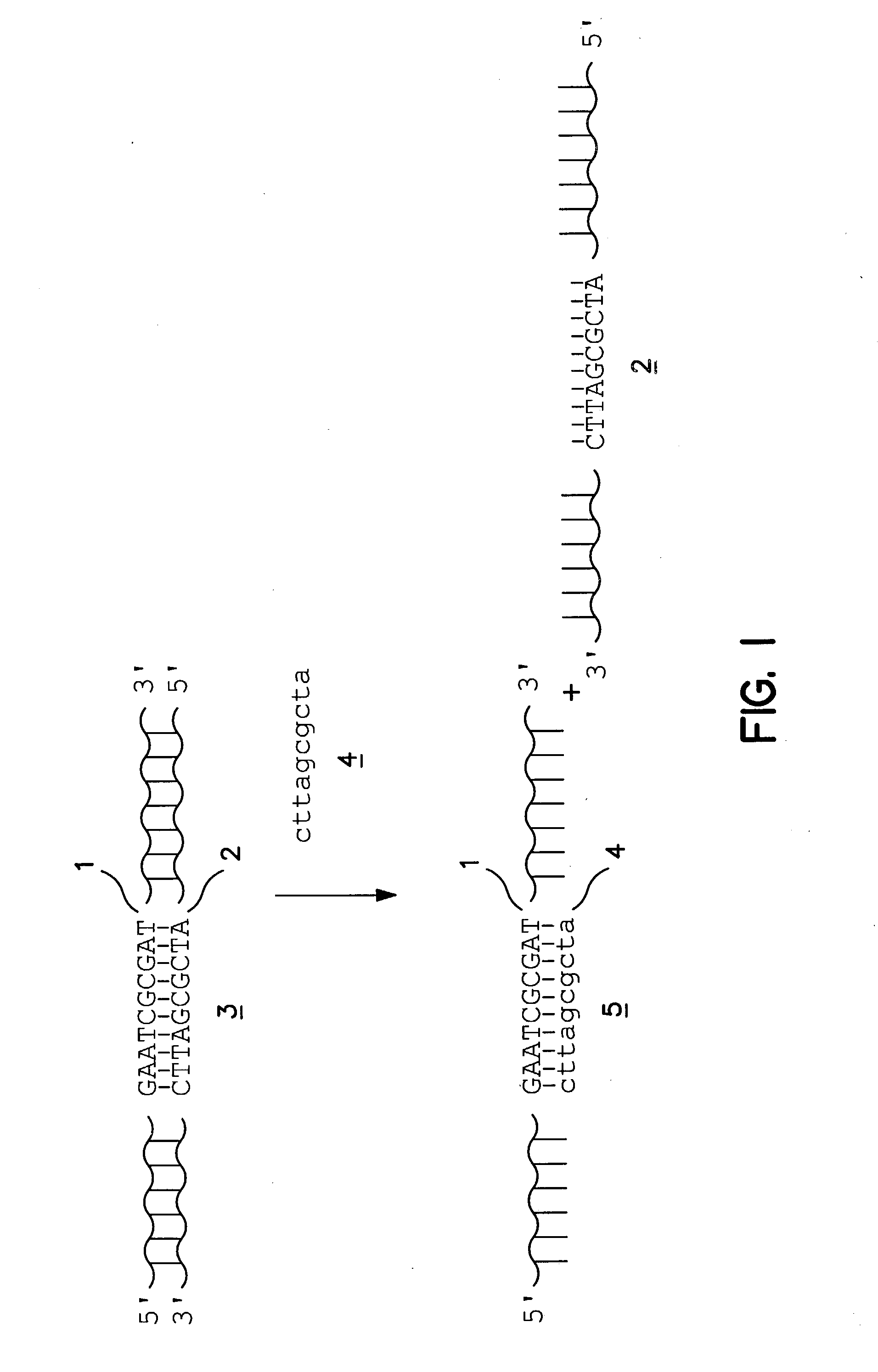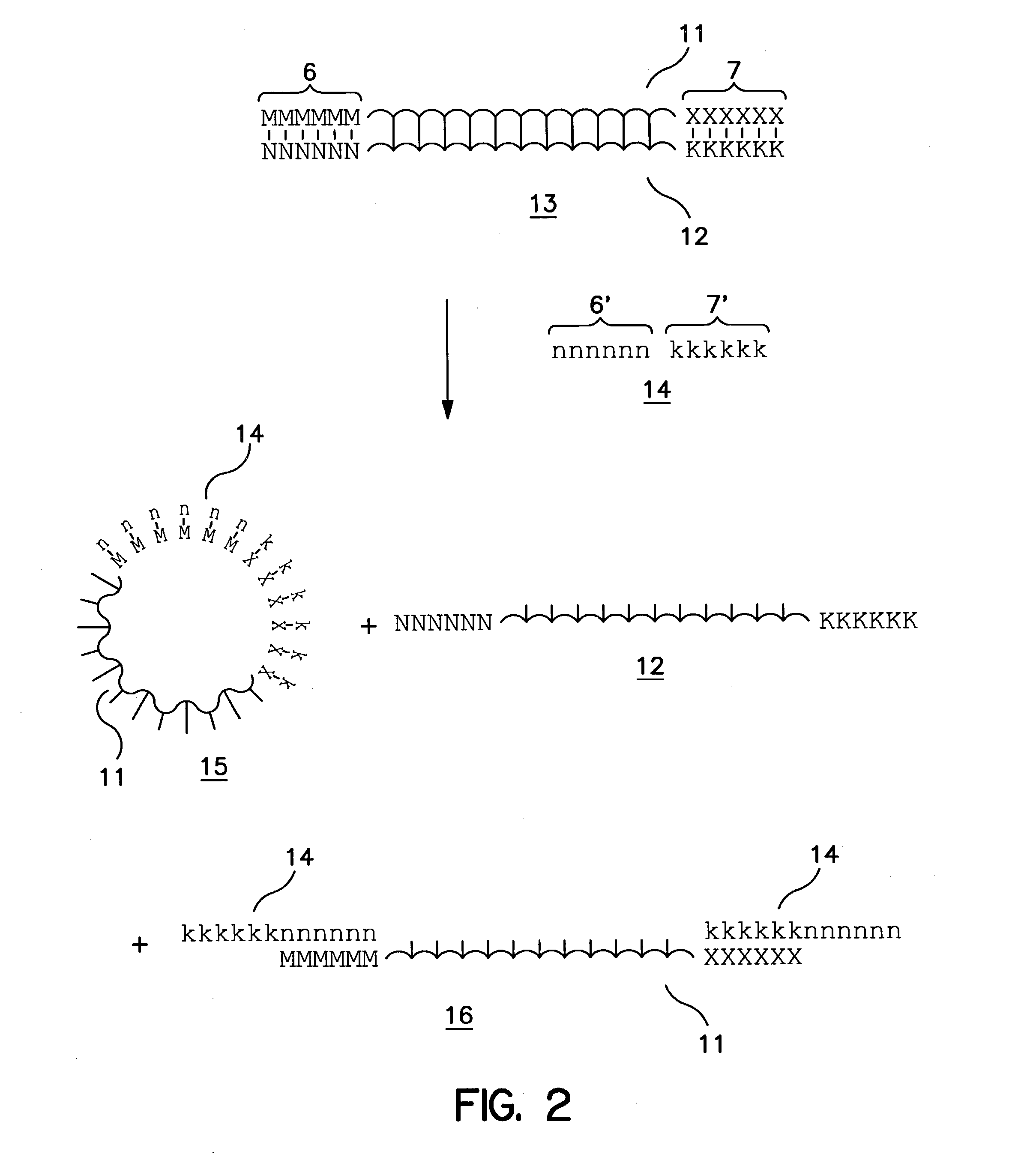Methods for isolating one strand of a double-stranded nucleic acid
a nucleic acid and double-strand technology, applied in the field of compounding and methods for isolating one strand of a double-stranded nucleic acid, can solve the problems of limiting the general applicability of the target nucleic acid, increasing the time and expense of the assay, and limiting the availability of single-stranded targets, so as to promote heteroduplex formation and accelerate the kinetics of heteroduplex formation
- Summary
- Abstract
- Description
- Claims
- Application Information
AI Technical Summary
Benefits of technology
Problems solved by technology
Method used
Image
Examples
Embodiment Construction
[0033] The present invention provides a rapid, efficient, and specific method of isolating one strand of a double-stranded target nucleic acid. By utilizing competitor oligonucleotides in which the nucleobases are connected to a backbone having a net positive or net neutral charge at the pH and temperature of the assay, the invention capitalizes on the observed advantageous kinetic and / or thermodynamic properties of nucleic acid heteroduplexes compared with conventional DNA / DNA, DNA / RNA and RNA / DNA duplexes to provide methods for isolating one strand of a double-stranded target nucleic acid that provide significant advantages over presently available methods.
[0034] As will be discussed in more detail below, single-stranded nucleobase polymers having positively charged and / or uncharged nucleobase interlinkages are known in the art. One type of uncharged nucleobase polymer, commonly referred to in the art as a "polyamide nucleic acid" or "PNA," comprises a series of nucleobases linked...
PUM
| Property | Measurement | Unit |
|---|---|---|
| temperature | aaaaa | aaaaa |
| temperature | aaaaa | aaaaa |
| physiological ionic strength | aaaaa | aaaaa |
Abstract
Description
Claims
Application Information
 Login to View More
Login to View More - R&D
- Intellectual Property
- Life Sciences
- Materials
- Tech Scout
- Unparalleled Data Quality
- Higher Quality Content
- 60% Fewer Hallucinations
Browse by: Latest US Patents, China's latest patents, Technical Efficacy Thesaurus, Application Domain, Technology Topic, Popular Technical Reports.
© 2025 PatSnap. All rights reserved.Legal|Privacy policy|Modern Slavery Act Transparency Statement|Sitemap|About US| Contact US: help@patsnap.com



